Acceptance inspection of a new car
|
|
Acceptance inspection of a new car
|
Acceptance inspection of a new car is obligatory for all Saab cars. See Policies and Procedures (P and P).
Carry out the inspection and confirm it with your signature on the inspection form. Inspection form, see
 .
.
A new car must be inspected as soon as possible after it has been accepted. The person responsible for acceptance must ensure that defects and deficiencies, etc. are reported in accordance with applicable procedures (see P and P).
|
1.
|
Check that the specification of the car coincides with the order form. This also applies to optional equipment.
|
|
2.
|
Check that the spare wheel, tools and other equipment supplied with the car are present.
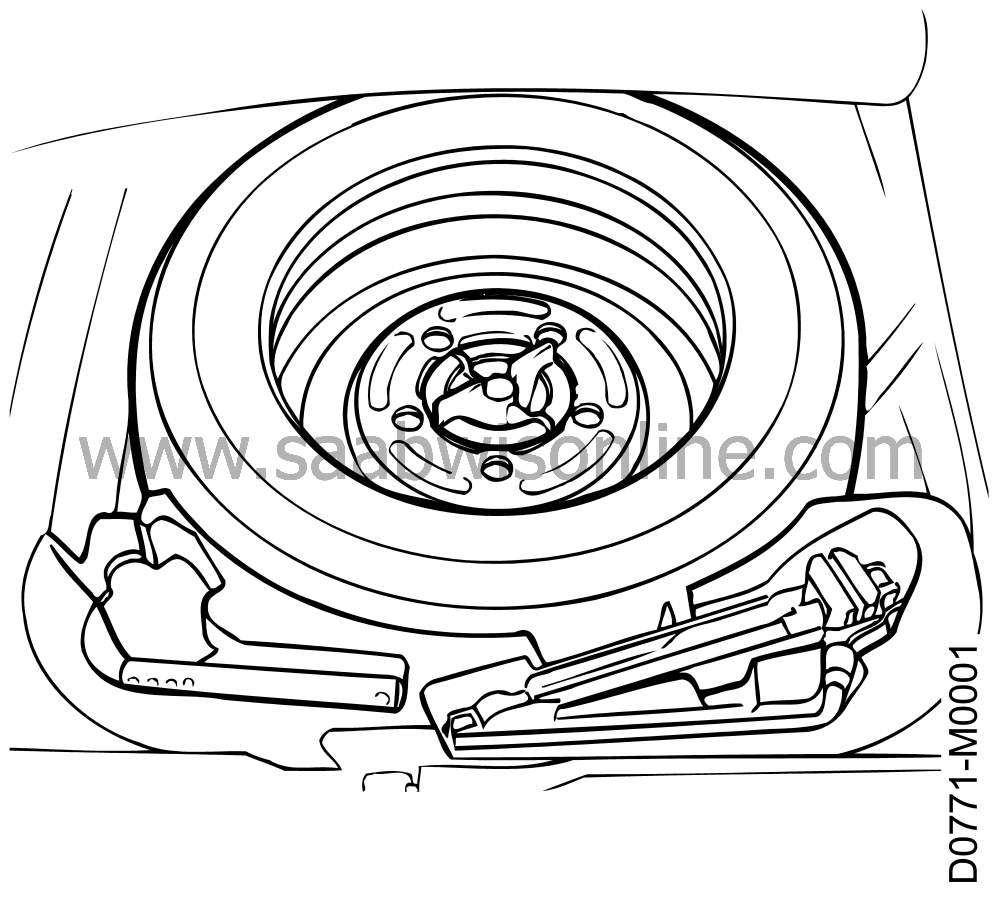
|
|
3.
|
Check the battery voltage.
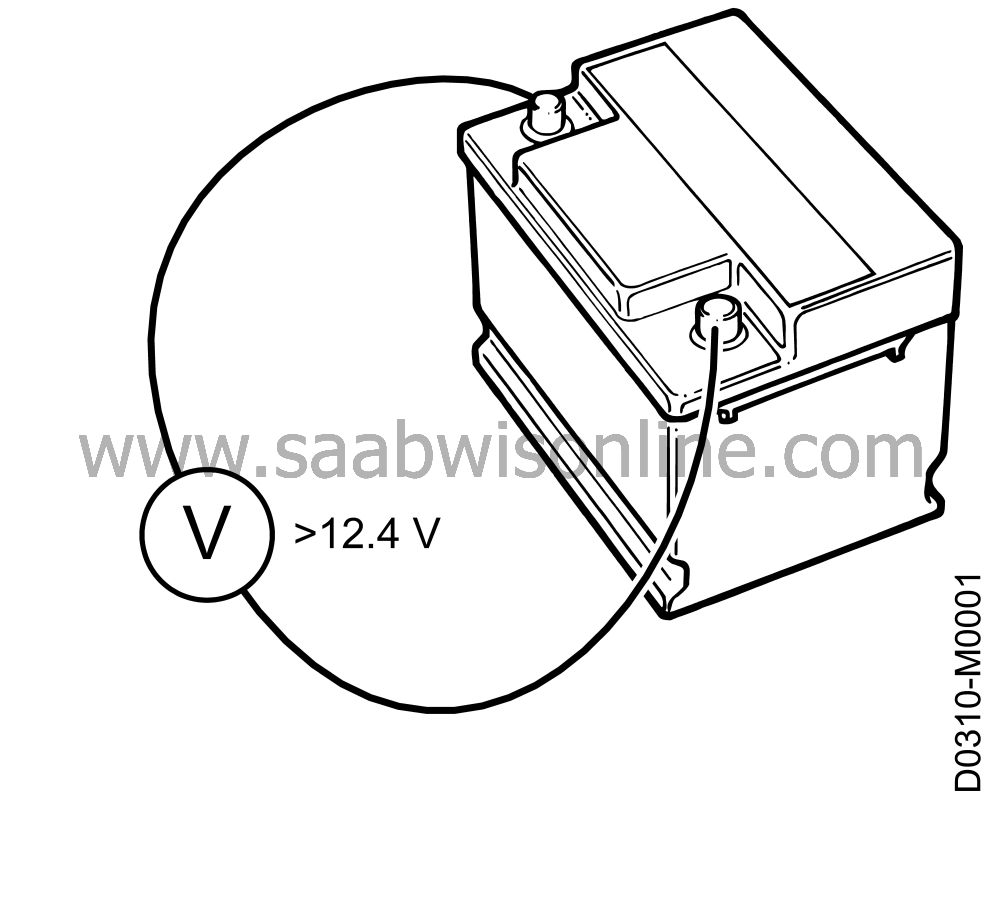
|
|
|
•
|
Current consumption should be 0 A when a reading is taken.
|
|
|
•
|
Check the condition of the battery by taking a voltage reading.
|
|
|
•
|
Check the level of the electrolyte and top up as necessary. For further information, see Service Manual 3:1.
For further information, see Service Manual 3:1.
|
Important
|
|
If the voltage is below 12.4 V, the battery will have to be charged (fully-charged battery: 12.72 V). If the voltage is below 12.0 V the battery must be changed.
|
|
|
|
|
4.
|
Clean the car for paintwork and damage inspection. If the car is to be put in storage, wash off dust and dirt for inspection without using Tempro 75 Remover (the paintwork protector will then remain intact).
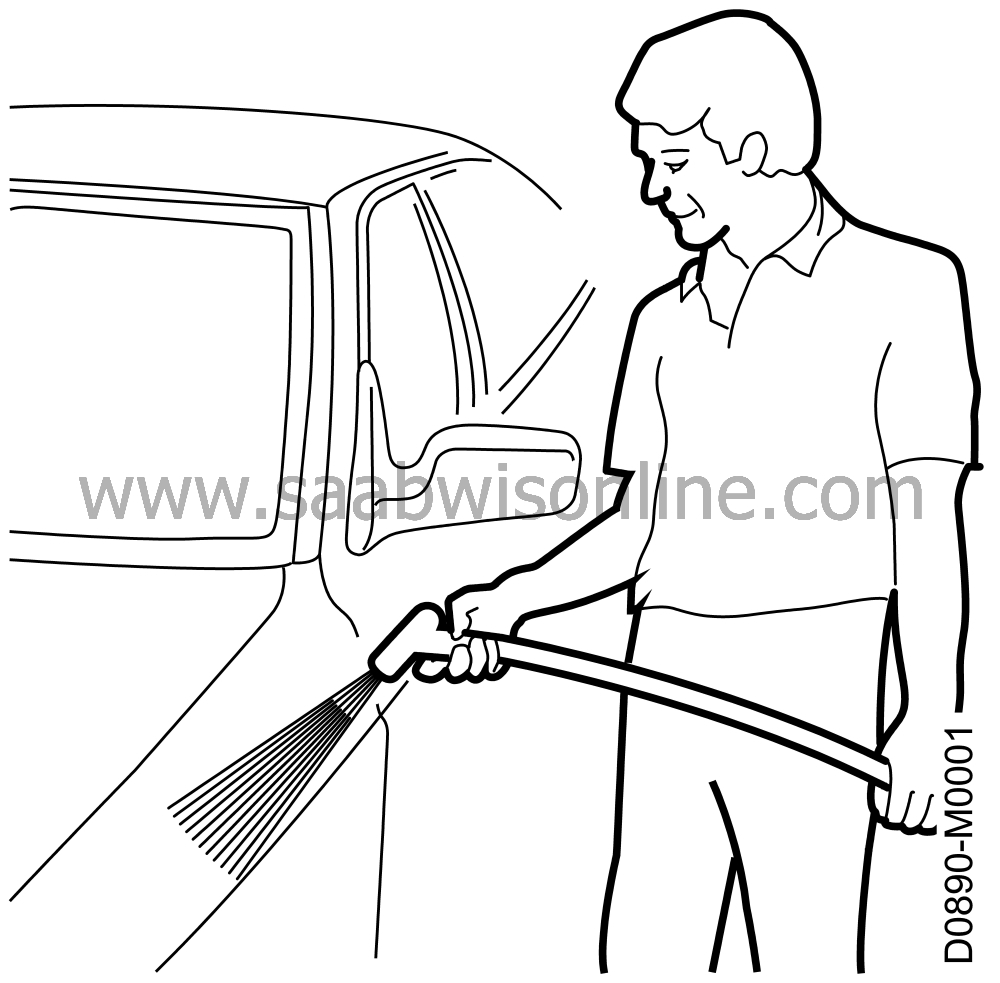
|
Important
|
|
On Convertible models, leave the transport protection over the soft top in place when washing off the paint protector with Tempro 75.
|
|
|
|
|
5.
|
Inspect the car internally and externally for damage.
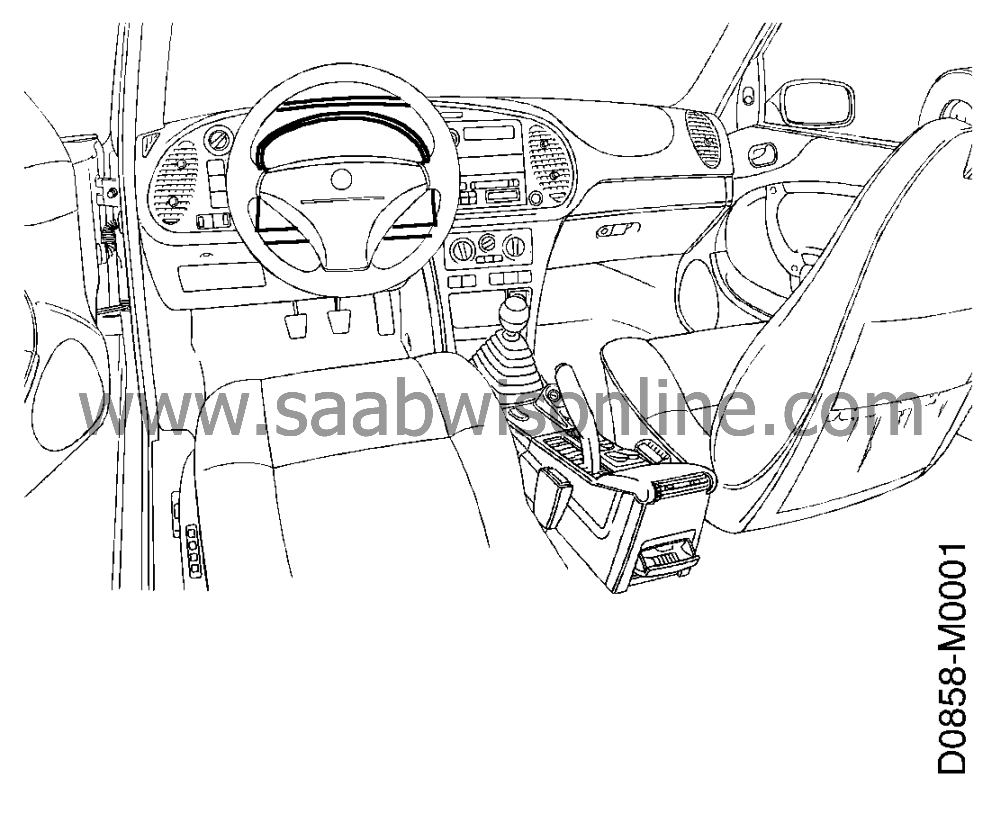
|
|
6.
|
Make a note of and report any damage and other observations .
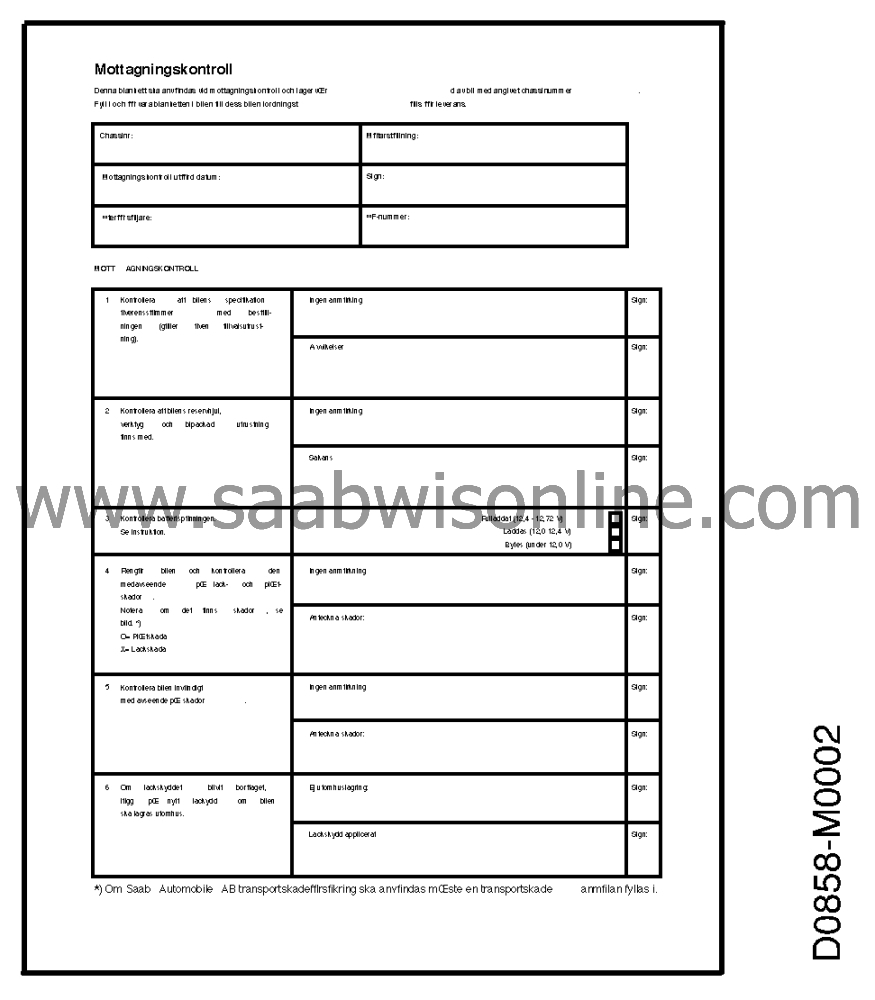
|
|
7.
|

Check the tyre pressures and adjust them if necessary to at least 3.5 bar (50 psi).
|
Important
|
|
If the car is parked with the tyres inflated at too low a pressure, a flat area will form on them where they rest on the ground. This gives rise to vibration and makes wheel balancing more difficult.
|
|
|
|
|
8.
|
If the car is stored in an ambient temperature of more than +20
°
C, the petrol tank must be at least 2/3 full. Otherwise, there is a risk of petrol pump malfunction as a result of oxidation.
|
|
9.
|
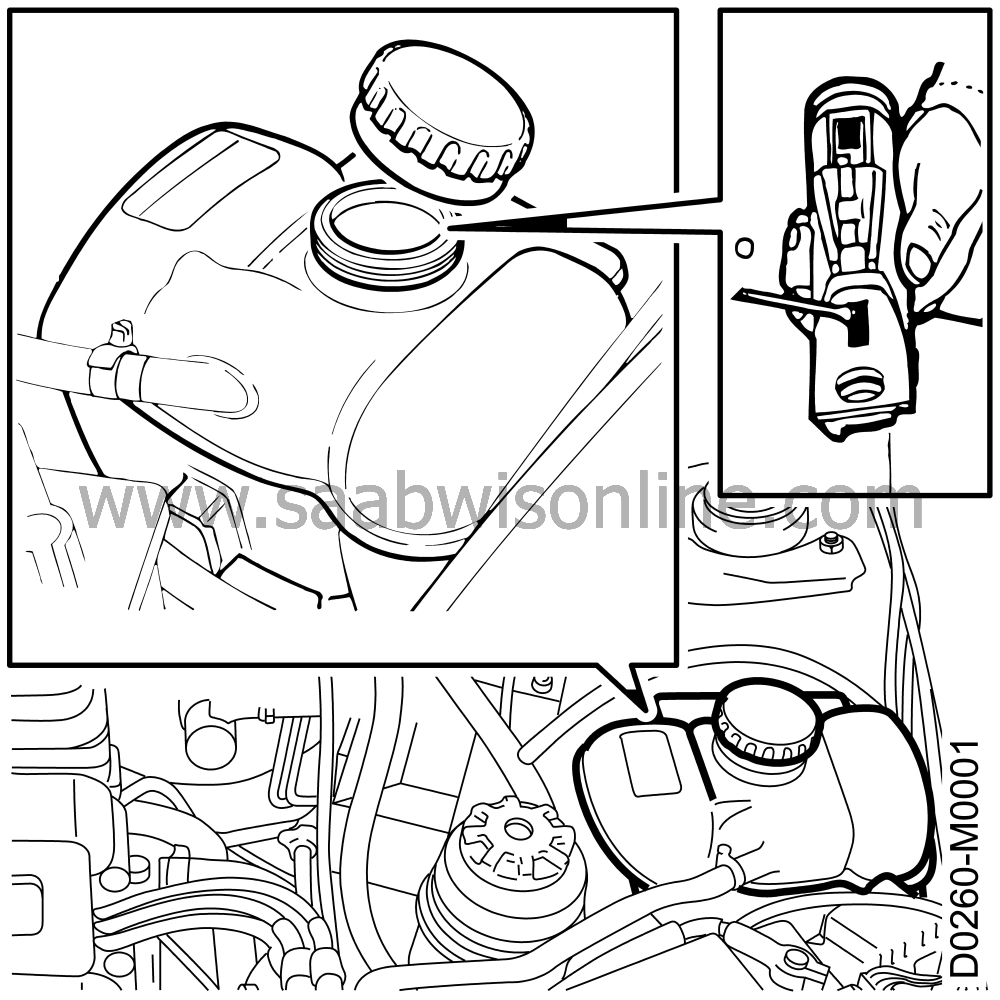
Check the level of coolant and amount of antifreeze. The coolant must be able to withstand minus 30-35
°
C without freezing. It will then also provide maximal corrosion protection. Top up as necessary with equal amounts of SAAB Original Coolant and water.
|
|
10.
|
If the car has been dewaxed, a new protective film must be applied. See under "Applying paint protector".
|
|
11.
|
Drive the car to the storage car park, applying the brakes briefly and repeatedly so that the brake discs will be clean and dry.
|
|
13.
|
Check and adjust the protective plastic that is out of place.
|
|
14.
|
Make sure that: The handbrake lever is released. Manual gearbox: engage reverse gear. Automatic transmission: set the selector lever to the P position. All windows, doors and tailgate are properly closed.
|
|
16.
|
Disconnect the positive cable from the battery or remove the battery for charging. Close the bonnet.
|
 .
.









